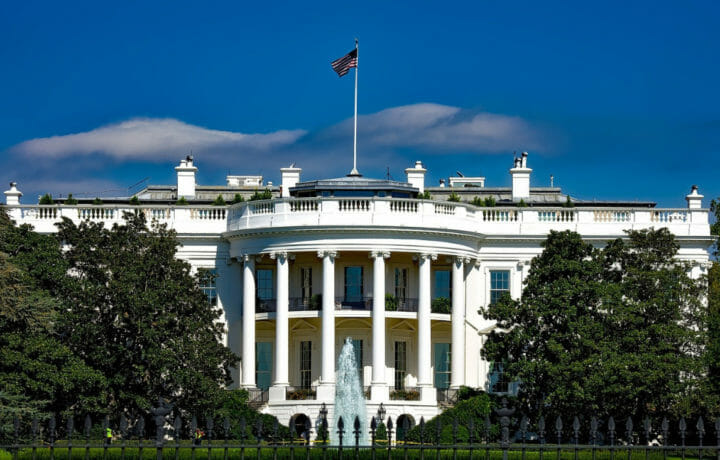The House and Senate worked nonstop to pass this bill, and it was signed on Independence Day by the President. This bill supports the President’s agenda that he ran on and brings closure to the ongoing infighting on the Hill since its introduction.
The President’s agenda was encapsulated in this bill and is considered to be the most significant legislative win of President Trump’s two terms.
Give and Take
It took considerable stewardship from Republican Party leaders to shepherd this tax and spending bill through the often-divided Congress. Especially when considering the very narrow majority that the Republicans have in both houses. Many felt the bill didn’t do enough to address the ballooning national debt, while others objected to the five-year moratorium on debt ceiling negotiations. There was much infighting and round-the-clock negotiations throughout this ordeal.
What’s in the Bill
This 900-plus-page document reorganizes the federal executive branch and provides additional spending for border security and the military. Federal spending is limited in specific categories, expanded in others, and includes a significant overhaul of tax policy and entitlement programs, among other changes.
A significant accomplishment is the extension of key provisions from the 2017 Tax Cuts and Jobs Act, which includes making these tax cuts permanent. There are new investments in defense and border security, as well as stricter eligibility requirements for Medicaid and federal student loans.
Here is a list of some of the significant tax elements of the Bill:
- No tax on Social Security
- Billions for completing the border wall and hiring new agents
- Raise the standard deduction to $15,750 for single filers
- Child tax credit increase to $2,200
- Deductions for qualified tip wages and overtime
- New car loan interest deduction of up to $10,000 (Income restrictions apply)
- State and Local Tax (SALT) deduction cap raised to $40,000 through 2029
Tax cuts were a huge part of the bill, and passage guarantees that taxes won’t increase at the end of the year. This bill addresses many issues, and even with austerity measures incorporated into the legislation, spending will still spiral higher unless tariffs, deregulation, and reshoring industries in America don’t take hold quickly.
Something for Everyone
American workers, farmers, and small businesses are expected to benefit from this legislation. Important tax provisions help farmers save money, invest in new technologies, and pass family farms to the next generation.
Businesses are allowed to claim 100% bonus depreciation for business investment, and immediate expensing for domestic research and development expenses. Pro-business, pro-growth tax policies enable companies to better plan for the future and empower them to invest and build their plants in the United States.
The bill’s targeted tax incentives are expected to accelerate private investment in next-generation networks and support infrastructure deployment, job creation, and economic growth nationwide. This helps to strengthen small businesses, family-owned operations, and manufacturing workers across the country.
Limits and Restrictions
The legislation incorporates significant cuts and restrictions, including a mandated 80-hour-per-month Medicaid work requirement for able-bodied adults and adults with children aged 15 and older. There are Medicaid funding restrictions on large abortion providers.
Millionaires are now restricted from receiving unemployment benefits, and a lifetime borrowing limit of $257,500 applies to federal student loans, with caps for specific categories. As the bill is implemented, agencies responsible for it, including the IRS, will publish and distribute guidance.
More to come as implementation rolls out across the government.
New Spending
Unfortunately, our annual spending will continue to increase our deficit for the near future and possibly beyond. The government is great at spending our money, but our representatives lack the fortitude to make necessary cuts that may impact their constituents. The next election cycle is just around the corner. Here is a sample of additional spending authorized in the Bill.
- Debt ceiling increased by $5 trillion
- An additional $150 billion for border security, including $30 billion for Immigration and Customs Enforcement, and $46.5 billion to construct the southern border wall
- Approximately $154 billion in additional defense spending, including $25 billion for a space-based missile defense system and $29 billion for shipbuilding in America
- $50 billion in Medicaid funding for rural hospitals
- New “Trump” savings account for parents and guardians of children born between Jan. 1, 2024, and Dec. 31, 2028, with the feds providing an initial $1,000 seed money
The Flip Side
Critics of the bill believe that millions of Americans will lose healthcare coverage due to tighter eligibility requirements for Medicaid. The new law requires States to condition Medicaid eligibility on meeting work requirements. Individuals aged 19 to 64 must work at least 80 hours per month to be eligible for coverage, unless they qualify for certain exemptions.
The bill also phases out Tax incentives for clean energy. Without these credits, fewer wind and solar projects will be funded and built, possibly increasing our dependence on natural gas and coal to generate electricity.
If our Gross Domestic Product (GDP) doesn’t expand as the administration suggests, trillions could be added to our national debt over the next ten years, including interest. This could potentially be countered if interest rates fall, which could stimulate the economy and reduce the government’s debt servicing costs.



